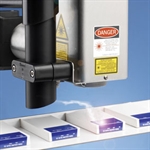 Add My Company
Add My Company
Sign In
Laser Generated Airborne Contaminants
09-01-2012

In an article, the Laser Institute of America discusses the considerations of dealing with fumes generated by laser processes.
Lasers are commonly used to mark, etch, cut and weld a wide variety of materials in automotive plants, packaging lines, medical procedures, aerospace manufacture and many other applications. It seems that there is a new use for lasers every day. Lasers can offer an alternative to traditional processing methods. If coupled with the right Local Exhaust Ventilation (LEV) systems, lasers deliver excellent results in terms of precision, machining time, flexibility and performance. To comply with international health & safety regulations, LEV’s are required or recommended for use with most laser operations in order to protect personnel and to enhance the performance of the laser system itself.
What happens in laser processing?
When a laser beam is applied to the surface of a material, several conditions can occur. High temperatures that are generated cause the air near to the contact point to expand, generally back in the direction of the lens. The laser beam causes incineration, vaporization, melting and softening of the target substrate. Rapidly expanding gases pick up and carry the removable particles and droplets at relatively high velocities away from the substrate. The contaminants released consist of a wide variety of gases, in some cases noxious i.e., benzene, phosgene. They also consist of the products of complete and partial combustion including possible oxides of the base material. Stainless steel, for example, releases Chromium and Nickel, which can cause chronic toxicological effects such as liver/kidney disease and cancer.
It is critically important that you are aware of the emissions produced during your specific application as many laser processes produce extremely harmful and even toxic fumes. The following is a list provided by Purex, who manufactures digital and analog fume extraction solutions for laser applications.
Common Substrates, and LGACs
For more information on Laser Generated Airborne Contaminants talk to Purex International Ltd
Enquire Now
List your company on FindTheNeedle.
